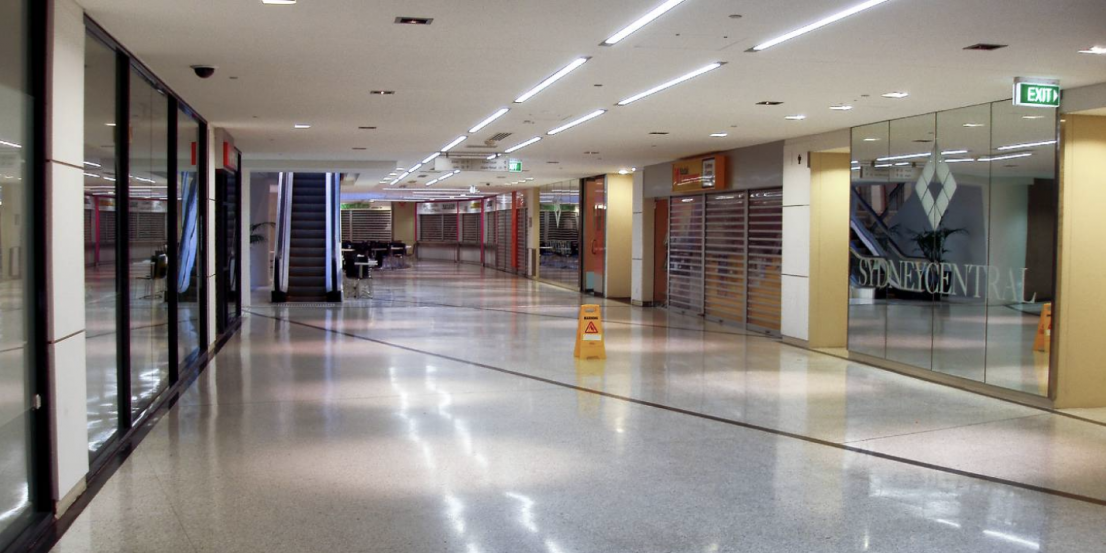
In times of uncertainty, we often look to our leaders for guidance. But COVID-19 has caused such unique challenges, they’re scratching their heads too. Here’s how HR can help.
Knowing how to effectively manage staff from afar might be a skill leaders of global companies have, but leaders of local companies are learning on the job.
HRM speaks with two experts about how to help your leaders adjust management of a workforce that is operating remotely. Spoiler alert, a lot of it comes across as simple, but the trick is all in commitment and execution.
This article is broken down into five sections:
- The power of listening
- Performance management
- Is that conflict, or something else?
- Reframing recognition efforts
- Strategic meetings
- Assessing wellbeing
1. The power of listening
“There’s no playbook for this,” says Steve Bennetts, psychologist and head of growth & strategy, employee experience solutions, APJ a Qualtrics.
Most leaders have never dealt with such a sudden shift. Like us, they’re learning how to do their job differently, while at the same time figuring out how to help the rest of us do ours.
What’s imperative, Bennetts says, is that leaders are listening to what their people need. If they don’t, he says they are “just throwing darts in the dark”. And it’s not just about giving your people an outlet, you have to give them a voice – you have to follow up on the feedback they’ve provided. Bennetts points to research Qualtrics recently conducted which shows organisations that turn feedback into action have much higher engagement rates (78 per cent) than those that don’t (39 per cent).
“During change, our results show people want [leaders] to listen even more. Our old way of listening, like an annual engagement survey, probably isn’t suitable right now.”
Their results also found that organisations that formally checked in with staff at least every quarter saw engagement levels of 63 per cent. That dropped by 13 per cent when feedback was only sought once or twice a year.
2. Performance management
Should you expect the same level of performance from employees at the moment? Bennett doesn’t think so. Everyone is adjusting to a shocking new reality, and we have to give them time.
“One of the key things we need to remember is that this wasn’t a planned situation. When you ask to work from home normally, you would set up a work environment and baby sitters etc. so you can continue to work as effectively as you would in the office. Unfortunately, right now that’s not the case.
“Leaders might be managing people who are having to do four hours of homeschooling before they can start their work day,” he says. “I know that I’m only going to get 50 per cent productivity out of them, and I just have to adjust to that.”
Not only will their performance temporarily shift, so too will their participation rates.
“It’s not work-life integration anymore, it’s a work-life overlap,” says Dr Jacqui Abbott FCPHR.
“The people you’re speaking to aren’t necessarily in a quiet environment at home. There could be children or animals around, or there could be more than one person in the house trying to work from home.”
Abbott says employees might feel highly anxious about a daily meeting they’re meant to attend because they’ve got things going on around them – screaming babies or nagging teenagers. She says leaders need to step in and say something like “that’s okay, we’re all doing the best we can”. They need to make this imperfect way of working acceptable.
It’s also important leaders are having very clear conversations about output, she says.
“If you’re clear about what you’ve got to do, how you’re going to do it and the hours you’re going to do it in are secondary. When you set clear boundaries for your staff, you’re setting achievable tasks.”
All of this isn’t to say that normal performance issues won’t arise. There is a small portion of workers who might use this time at home to slack off, or perhaps they were already experiencing issues.
When this happens, do you reach for regular HR tools, such as a performance improvement plan? Or should we be implementing new approaches such as a performance re-engagement plan to get them back on the straight and narrow? The answer is determined on a case by case basis, says Bennetts.
Abbott points out that you might even find that those who were previously underperforming start wanting to step up and contribute more. That could be out of fear of losing their jobs – research suggests discretionary efforts can increase during a crisis – or it could be because they feel a sense of loyalty to the company and want to see it succeed through the crisis.
3. Is that conflict, or something else?
The internet has always been rife with bullying and harassment, but with more of us heading online to work, we could very likely see this increase.
It’s hard for managers to keep their eye on this behaviour without having the victims speak up. As we know, many forms of workplace bullying can be subtle or difficult to identify, such as workplace gaslighting.
Considering the strange state of the world at the moment, people might be more likely to act out – especially those who are experiencing unprecedented levels of stress and anxiety.
“From a psychosocial perspective, there are a number of people who go to work to escape home,” says Bennetts. “People might have anxiety or depression, and they might use work as their downtime. [Those worlds) are now being interlaced for them. There are some mental health issues that can come out and it’s important managers talk about those with the individuals involved,” says Bennetts.
He adds: “What might be coming across as bullying or harassment might actually be a result of someone under a lot of stress or strain.”
Leaders can preempt these situations, he says, by being open with their teams and saying ‘we’re going to be communicating through video/email more often, so let’s be more accepting of people; just give everyone a moment.’
And you might have to remind people of this now and then.
4. Reframing recognition efforts
Employees can feel they’re working in the shadows when not in the office. It’s nice for leaders to issue a blanket statement acknowledging staff efforts, but what about those smaller individual efforts that go unnoticed?
Managers can witness the blood, sweat and tears that go into a project when they’re physically overseeing it, but it can be harder to detect the time and effort put into a task when multiple people are working on the same thing from afar.
Instead of the pat on the back staff might be used to, leaders have to come up with new approaches. That might be implementing an ’employee of the week’ program; it could be calling out a job well done in your virtual company meetings; or creating a specific online space for shouting peoples’ praises (in my workplace, we have a dedicated Slack channel for this called #bloodygoodworkmate).
Bennetts says for any of the above to be effective, it’s first important that managers put clear frameworks in place to help staff define what success looks like in their specific role.
“If managers don’t do that, their employees will probably flounder during this time. Because they’re not sure what success looks like.
“What we’ll see is a lot of organisations adopting something that we’re seeing in the world of tech, which is OKRs (objectives and key results). So that’s about outcome driven results and putting clear metrics up for what people need to achieve. Set a goal that’s attached to a result and make sure it’s easy to measure.”
5. Meetings
Have a clear agenda for your meetings, says Abbott. We’ve heard this tip before, many times in fact, but no longer is it just well meaning advice – it’s a business critical fact. In trying times, you need your people to be as productive as possible, and inefficient meetings will eat away at that productivity.
“Rather than putting out lots of information, a [virtual] meeting is an opportunity to ask questions, to seek understanding… so everyone is very clear about direction and people have an opportunity to voice their concerns.”
She also encourages leaders to take the lead on setting up non-work related online gatherings.
“I’ve heard of a group that has people come online to do The Age quiz together at lunch time. Another idea is to do virtual walking meetings. So you can connect while doing other things.”
Taking a diversity and inclusion lens to meetings, Abbott says it’s important for leaders to remember that people operate differently.
“It’s important that all voices are heard. If information can be disseminated beforehand, do that. If one person is doing all of the talking, it can be hard for people to take in all that information. It needs to be broken down into smaller chunks.”
Bennetts adds that your choice of communication platform is crucial.
“Say you’re opening a Zoom meeting, the loudest people will get the most voice in that forum. But if we go out and get everyone to complete a feedback survey, you’re giving all of your people the chance to share their thoughts, and that feedback is treated equally.”
One question Bennetts suggests leaders ask during their end-of-day meetings is ‘what has your experience been like today?’
“Someone might answer, ‘I feel like we’ve had a lot of meetings. It’s feeling hard to get my work done’. And you can talk about how to adjust that.”
6. Assessing wellbeing
HRM has published plenty of articles on how to create a mentally healthy workplace, and there are also lots of great online resources out there about how to emotionally support employees in a virtual world. But one thing you might not have considered is setting up a strategy for how you check in.
“There needs to be a back end process to this. You don’t want three different people checking in with you within ten minutes and then you don’t hear anything from anyone for three days,” says Bennetts.
Leaders need to coordinate their approach and put together a plan for how they’ll support each person in their team. That might be daily check-ins from a direct manager, followed by weekly check-ins from the CEO and HR lead.
“I like the idea of having cross-team check-ins. Leaders might check in with people they’re not used to speaking with. You might discover new people or talents, or new resources amongst each other.
“This is a period of flux, and we will come out the other side. We just need to be human with people as we go through.”











